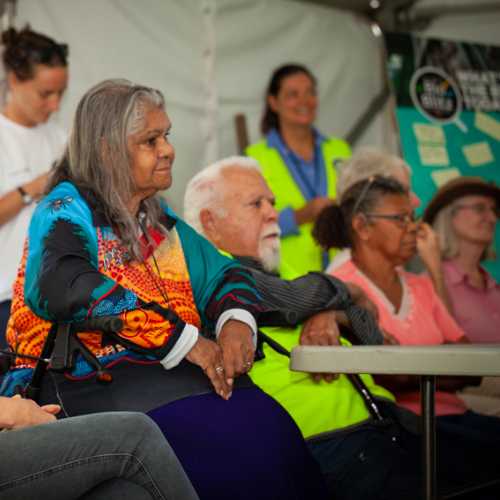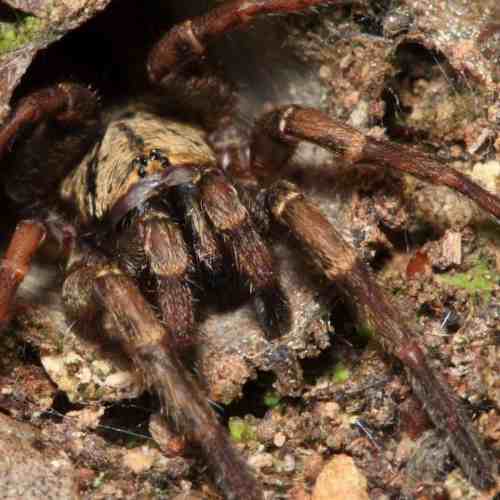The Mary Cairncross trapdoor spider belongs to a small family called Ctenizidae. They are named for the unique house-doors they construct over their burrows, from a mixture of soil, vegetation and silk.
This species has only recently been described and is found in a very small geographic area that includes the reserve and nearby rainforest habitat. It’s extremely limited range means the reserve is crucial for the species’ survival. Learn more about it in this article.
The ‘thynne’ part of their name gives homage to the Thynne sisters Elizabeth, Mabel and Mary Thynne, who originally donated the reserve land to council in 1941 in honour of their mother Mary Thynne (née Cairncross).
Their dark brown body is about 3cm long and covered in small hairs. The females are larger than the males. The female lays her eggs within the safety of her burrow months after mating. The young spiders will remain with her inside the burrow until they have matured enough to leave.
Trapdoor spiders build their burrows as soon as they have left the nest. As they grow in size, they widen the existing burrow. Concentric rings around the trapdoor entrance show evidence of these renovations. These rings allow researchers to estimate the age of the spider. The trapdoor spiders are currently understood to have a lifespan in excess of 20 years. The males live a solitary life outside the burrow always searching for a mate.
The age of these spiders, their very limited geographic range and the incredible burrows they construct over a lifetime is another excellent reason to stay on the path when you visit Mary Cairncross. Tread carefully and look closely to see the amazing trapdoor burrows.
History of the reserve


Learn more about the history of the reserve, including Jinibara cultural heritage and the Thynne sisters who ensured the rainforest's protection in the 1940s.
